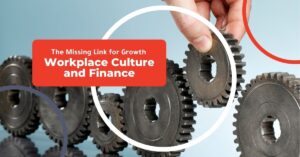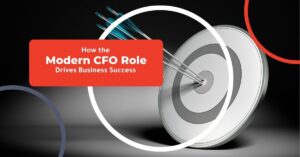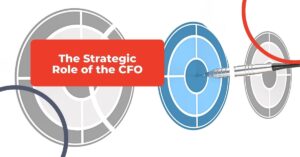SaaS Companies and the Critical KPIs
Sep 14, 2022
Software as a Service (SaaS) companies have to keep an eye on the usual business and financial metrics, but some Key Performance Indicators (KPIs) are uniquely essential. For a long time venture capitalists encouraged a mindset of growth at any cost, but increasingly the bottom line and long-term sustainability are levers for important decisions. The health of the company, its strategic position and profitability potential, and its ability to attract investors rely on knowing some magical acronyms: CAC, LTV, and Revenue Churn from ARR or MRR.
If you’re keeping score – and you should be – that’s a lot of letters that unlock important concepts.
Read on to discover why Customer Acquisition Costs, Lifetime Value, and Annual Recurring Revenue or Monthly Recurring Revenue are the top-of-list KPIs for SaaS leaders to focus on and adjust to, and how growth and profitability depend on it.
The Keys to Performance
KPIs are important for all companies, but they are especially vital for SaaS companies to measure progress and profitability, especially for new investors.
There is no one-size-fits-all approach when it comes to SaaS KPIs because each company has different goals and objectives, but let’s put a few ideas as core concepts:
- KPIs indicating growth, like new users or subscribers, new trial sign-ups, downloads, etc., are valuable but not the only metrics. Just a few years ago when venture capitalists were eager to invest in seemingly any company that showed positive growth these were some of the flashiest KPIs to know and grow.
- Profitability is an indicator of special importance. Your profitability demonstrates both financial seriousness and the potential for sustainable growth. Investors are increasingly demanding to understand the path to profitability.
Common SaaS KPIs
As a Saas leader, you’re probably already measuring indicators like:
- Number of customers
- Revenue per customer
- Customer satisfaction
- Net Promotor Score (NPS)
Your number of customers and your revenue per customer are often headline makers in a pitch deck. But none of these point to profitability. Having a hundred customers isn’t very exciting if you lost 70 last month. And while each customer might spend $100 a month with you, if it took you $101 to move them into business with you, you’re slowly sinking.
Key Profitability Indicators
Let’s explore three essential KPIs for knowing and growing profitability:
Customer Acquisition Cost, or CAC
Customer Acquisition Costs or CAC is the total cost of acquiring a customer. This includes sales and marketing, advertising, and other costs related to generating new customers.
A simple formula for calculating CAC is dividing all the costs incurred to acquire a customer by the number of new customers acquired during a set period.
For example, if you acquired 100 new customers last month, and you spent $3,000 to acquire one of those customers through advertising and marketing efforts, then you would divide $3,000 by 100 and get $30 as your CAC. Lower CAC is better for profitability – if you can get that acquisition cost down to $20, you have $10 more in profit.
Lifetime Value, or LTV
Lifetime value is the total value of a customer your business over their lifetime with you. Calculate LTV by adding all the revenue the customer has generated, minus any costs incurred in acquiring (hey, there’s CAC again) or retaining them.
Let’s go back to the customers we acquired for $30 and say your pricing is $50 each month or $600 each year. With 100 customers you’re generating $5000 each month or $60,000 yearly.
If a customer stays with you for an average of 5 years, their LTV is $3000 ($600/year x 5 years.) Your costs for acquiring each customer have been incurred. Now the cost per customer is more operational.
It’s easier and less expensive to keep an existing customer than to acquire a new one, and LTV is where some of your customer satisfaction or NPS KPIs come into focus – the longer a customer’s “lifetime” with you, the more revenue they generate. With fewer costs, the potential for profitability increases.
By the way, if you’re keeping score (and you should be!), if it costs us $3000 to acquire a customer (CAC) that we’re counting on to spend $600 each year for five years for an LTV of $3000…well, we might have a profitability problem.
Revenue Churn
Revenue churn is the percentage of customers or subscribers who canceled their subscriptions to your Service. If measured monthly, it’s as a percentage of total subscribers at the beginning of that month. The higher the churn, the more likely your business will have to spend more on marketing to acquire new customers and make up for those leaving.
So if of the 100 customers we acquired last month, 30 of them unsubscribed, our churn rate is 30%. If each paid us $50 a month or $600 a year, we also lost $1500 in monthly revenue or $18,000 in annual revenue. Besides that, if they left after just one month, our average lifetime may have decreased (unless we have so many customers we can easily absorb 30% of them leaving. Which…we don’t.)
The lower the churn rate, the better. A high churn rate indicates something is probably wrong strategically. There’s a poor market fit, our product or service is missing features or not solving problems as we hope, or maybe it’s just hard to use or some competitor is doing it better.
MRR and ARR
What we need are more acronyms. The monthly and yearly revenue we’re talking about in these examples are measures of Monthly Recurring Revenue (MRR) and Annual Recurring Revenue (ARR). You want more of each. But remember, revenue is not profitability. MRR and ARR are great growth indicators and are essential factors. Only in the context of these other KPIs can we understand financial health and profitability potential.
Indexing the Indicators
Wrapping these up:
- CAC is how much it costs for you to get a new customer. Lower is better.
- LTV is how much a customer spends with you over the “lifetime” of their relationship. A higher value is better, and a longer lifetime is better.
- Revenue Churn is how much revenue, as indicated by number of customers, is leaving you each month. Lower is better.
By the way, all metrics improve with more customers. A 30% churn rate is no fun, but it’s easier to absorb when you have a million customers than if you have 100. A CAC of $3000 is much easier to justify when you’re getting 1000 customers from the spend, not 100.
The CFO and SaaS
The right CFO is a must for SaaS companies to help you manage and understand these and more KPIs and their strategic value to strategic audiences.
Investors and venture capitalists want to see specifics, and they want to understand your path to profitability. Your CFO should help you build the path and articulate it to others. They should help you establish long-term goals and the targets to reach them, and they should have the experience and expertise for thoughtful guidance.
A fractional CFO is especially important because they don’t come with the significant overhead of a full-time employee. If you’re keeping score (and you should be!), that overhead cuts into your profitability. We love SaaS companies and have broad and deep experience helping them succeed. Master your profitability KPIs, or call us and we’ll help you do it.


